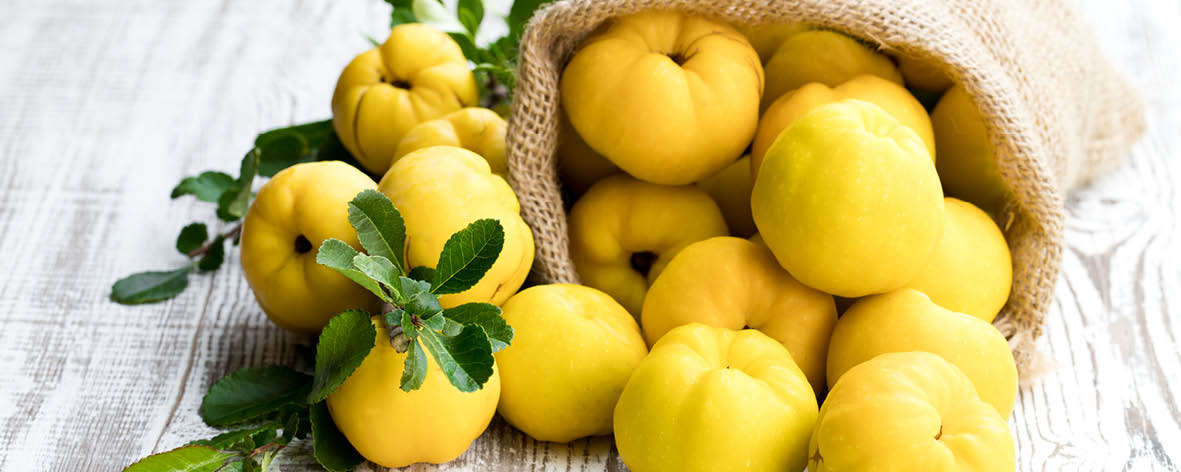The apple of love … our guide to quinces

Was the forbidden fruit which tempted Eve in the Garden of Eden actually an apple? If you think you know the answer, you might also know that this fruit has a heavenly perfume, beautiful blossom and rewards cooks who can unlock its subtle and delicious flavour. Read on to find out more.
Some believe that Eve’s temptation was actually not an apple, but a quince. Originating from the Caucusus and Persia, the quince is an old-fashioned fruit which can be traced back to antiquity. Greek mythology associates the quince with Aphrodite, the goddess of love, and many believe that the golden apple given to her by Paris was a quince. It has been suggested that the fruit awarded as a prize by Helen to Athene which triggered the Trojan War, was in fact a quince.
No matter its mythology, the quince is a delicious and versatile pome fruit related to apples and pears. Not grown to a great scale commercially, there are some small growers in Tasmania, and many, many backyard trees which yield a deluge of fruit in Autumn and early Winter. If picking quinces yourself for baking and stewing, opt for a golden fruit and a perfume-like scent. If picked when still greenish-yellow, the quinces will have a very high pectin content and be perfect for making quince jelly. Quinces can be prone to tunnelling grubs such as coddling moth, indicated by a small hole or brown spot. You can cut these out but it’s a lot of work. Shop-bought ones generally won’t have coddling moth.
Preparation can be time consuming but very rewarding. Quinces should be washed to remove the fuzzy down which covers them. They are very hard so a heavy, sharp knife should be used to cut them, and the pieces dropped in acidulated water (a bowl of water with a lemon squeezed into it) to prevent browning on contact with air.
Quinces can be poached by coring and cutting into quarters or sixths and putting them in a large enamelled casserole dish with sugar syrup and a vanilla bean, juice of one lemon, a couple of cinnamon sticks and some star anise. Cover with a lid or foil and bake in the oven at 150C for at least 4 hours or longer, until the quince is a deep ruby red. Don’t stir the quince or it will break up. Cool and serve with double cream and a drizzle of its wonderful ruby syrup or use in a tart or cake.
Quinces make wonderful jelly, perfect for glazing a ham or to add to pork roasting juices, and paste, a brilliant accompaniment on a cheese platter.
Quinces go with soft cheeses, honey, cinnamon, apples, pears, cream, vanilla, quail, chicken, walnuts, ginger and butter.

